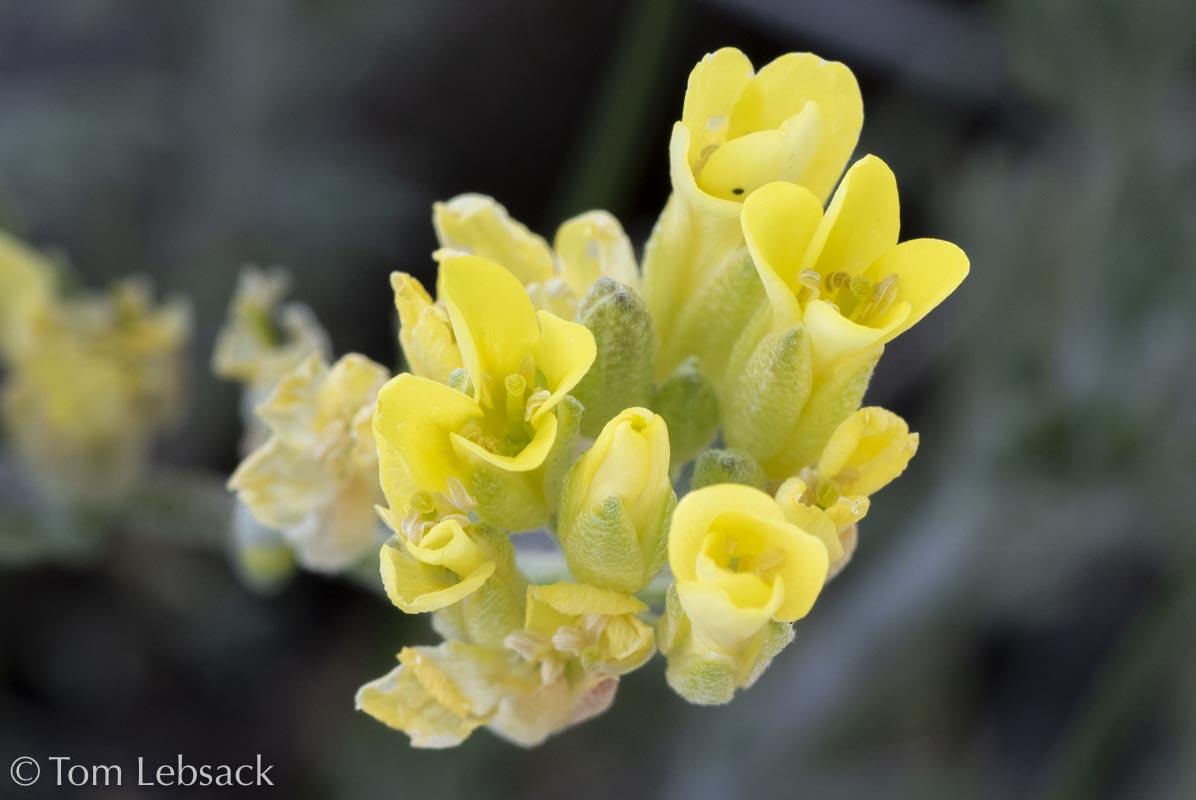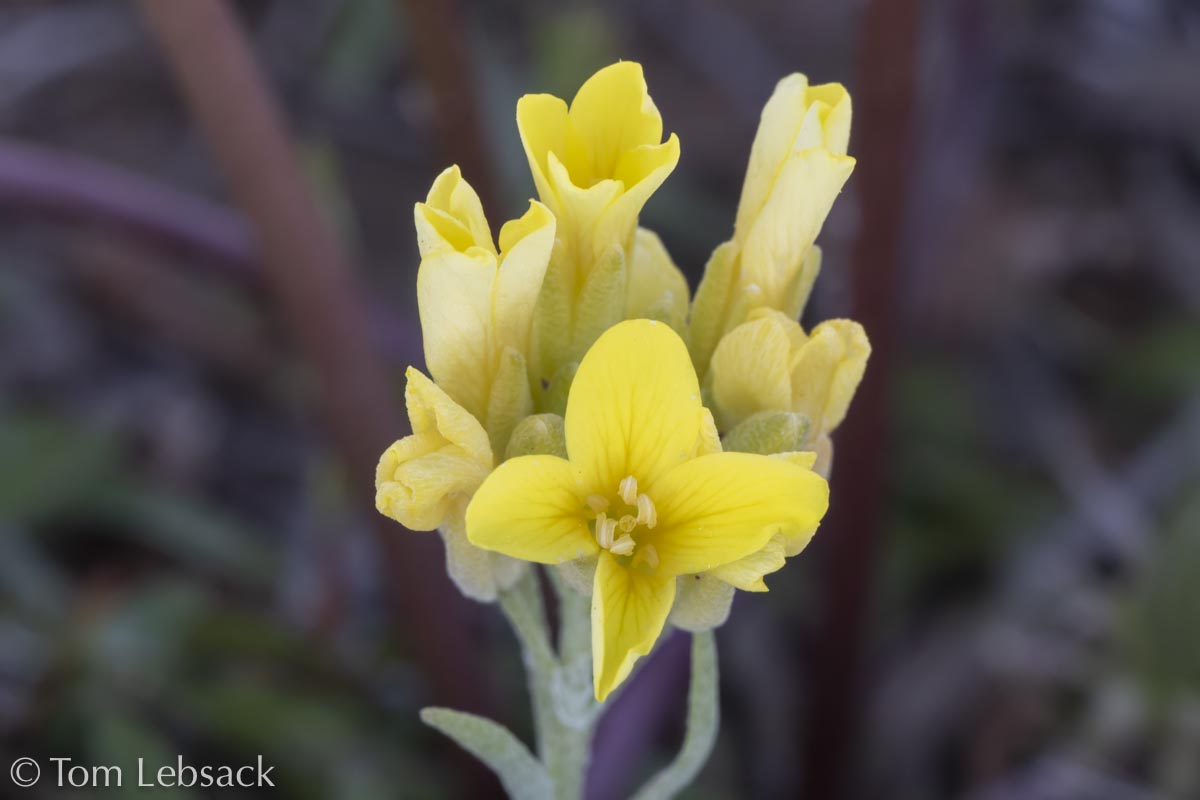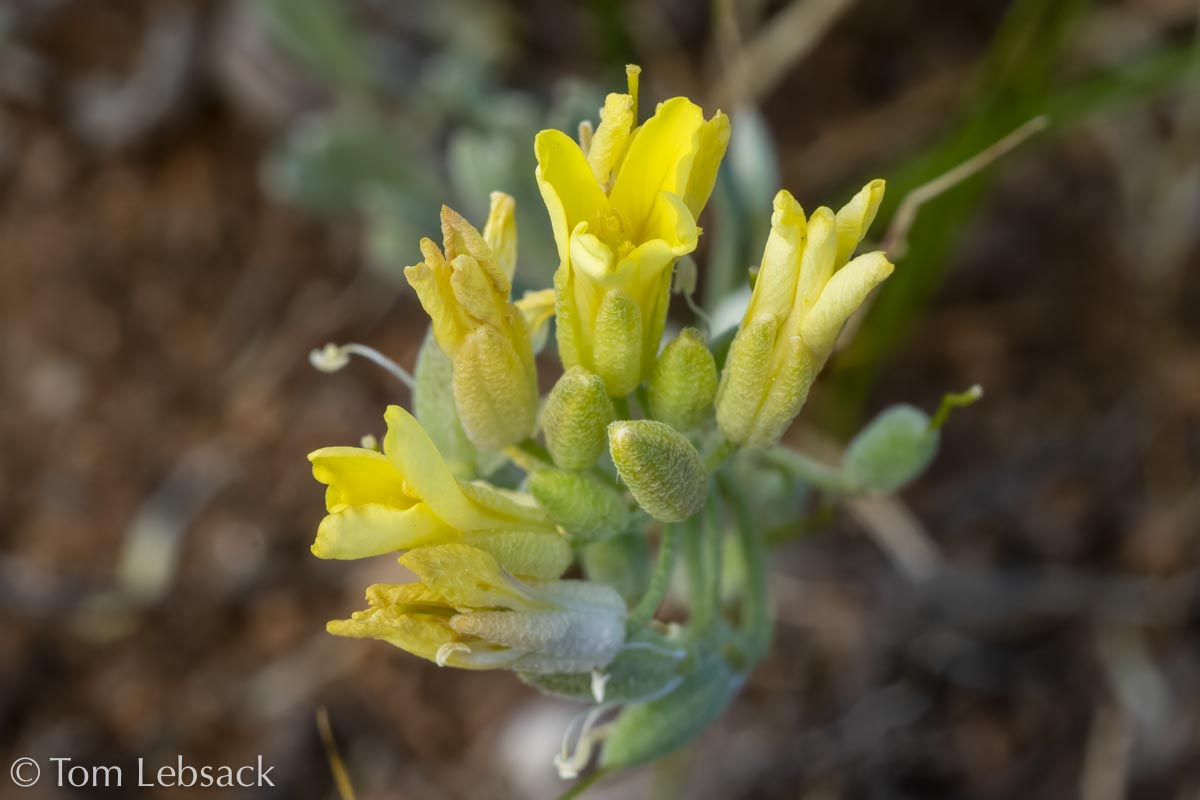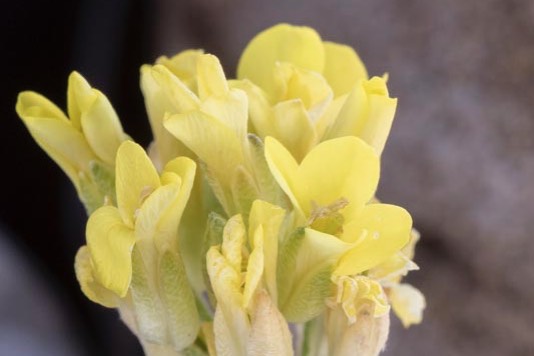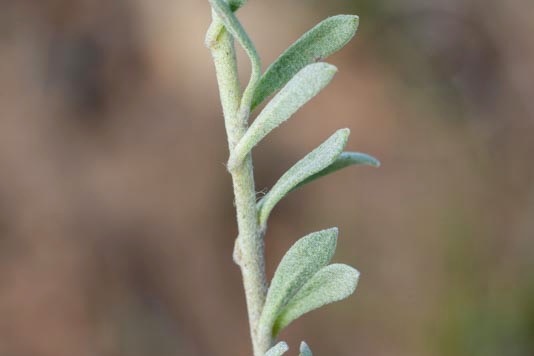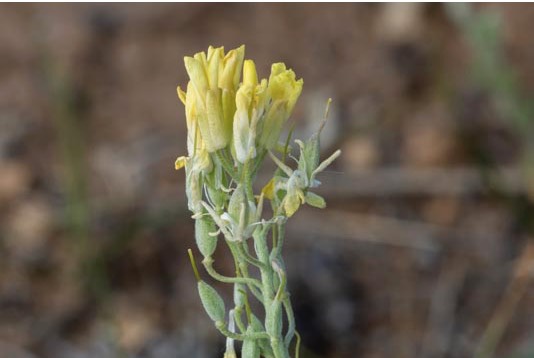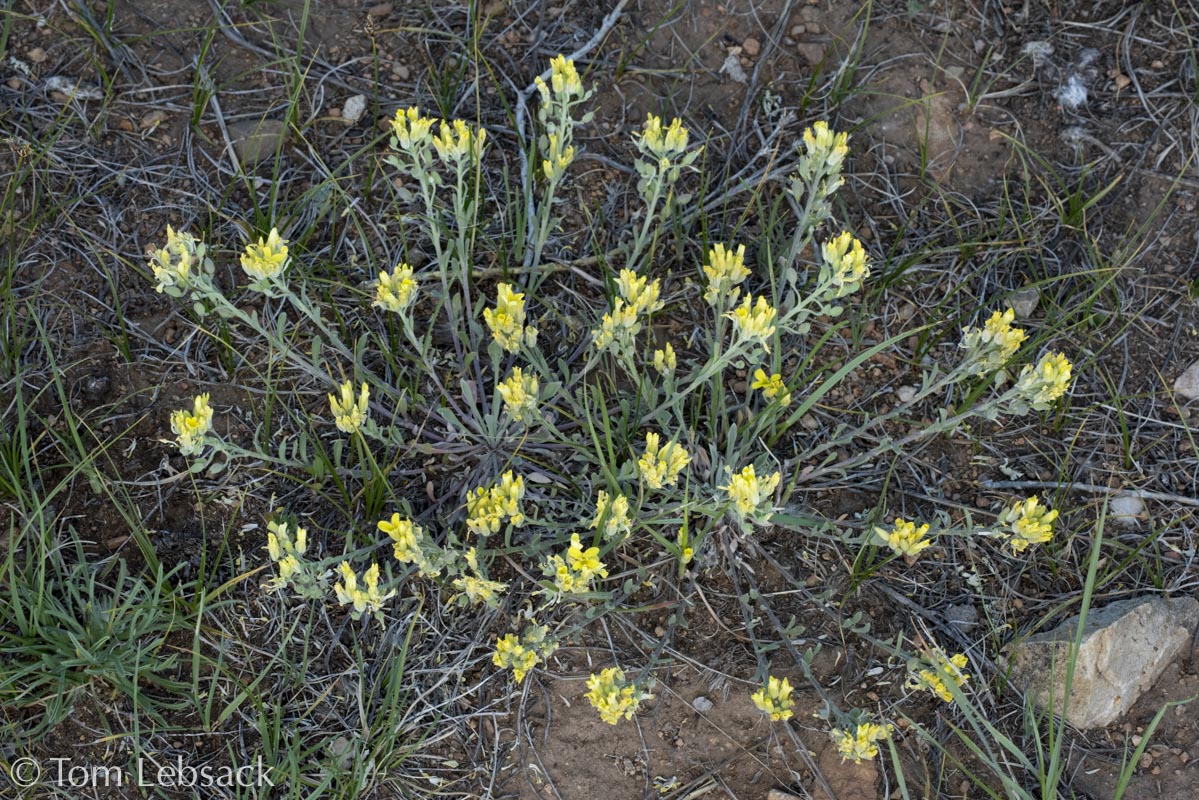Physaria montana
(Mountain Bladderpod)
| Scientific Name | Physaria montana (Lesquerella montana) | USDA PLANTS Symbol | LEMO3 |
| Common Name | Foothill Bladderpod | ITIS Taxonomic Serial No. | 823208 |
| Family | Brassicaceae (Mustard) | SEINet Reference |
Click Here |
| Description |
Life zones and habitat: Plains to subalpine (4500 to 10500 ft.); rocky, often granitic, non-limestone (calcareous) soils in open areas on outcrops and hillsides, woodlands and grasslands. Plant: Perennial with several prostrate to erect stems 2 to 8 inches long; foliage with star-shaped hairs. Leaves: Basal leaves are obovate to elliptic or nearly round, 3/4 to 2 inches long with margins that are entire, sinuate, or shallowly dentate; stem leaves are linear to obovate or rhombic, 3/8 to 1-inch long, with margins that are entire or shallowly dentate. Inflorescence: Densely-flowered raceme is compact, becoming elongated in fruit; flowers have 4 yellow to orange narrowly spatulate or obovate petals 1/4 to nearly 1/2-inch long; sepals are elliptic, shorter than the petals. Bloom Period: April to July. Fruit: Hairy, ovoid to elliptic seed pods less than 1/2-inch long at the ends of S-shaped pedicels about the same length. References: "Flora of Colorado" by Jennifer Ackerfield and Flora of North America. |
BONAP Distribution Map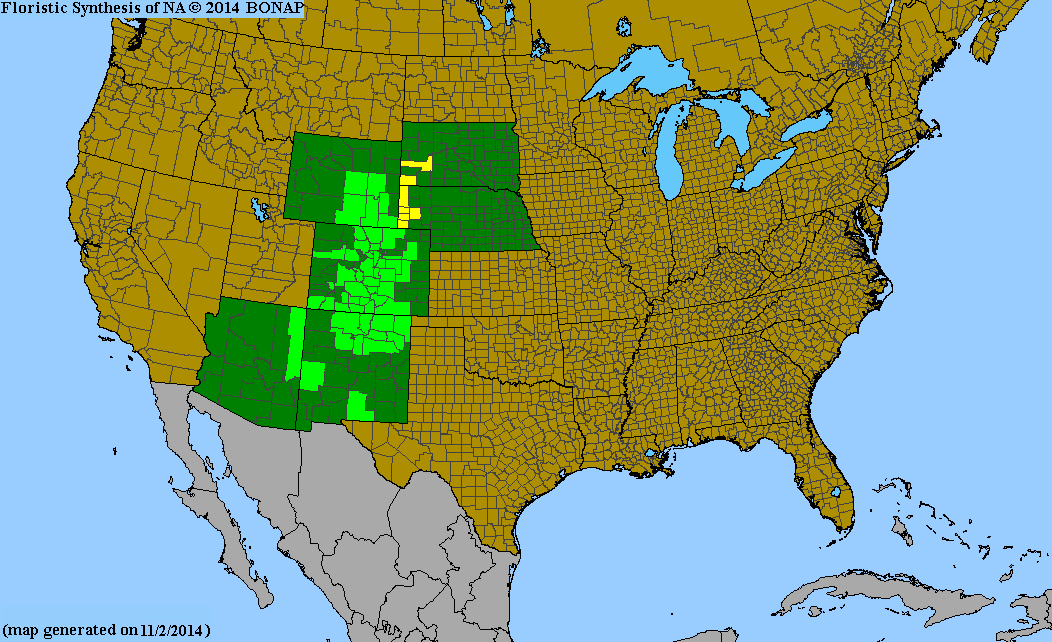
Map Color Key |
Colorado Status: Native |
© Tom Lebsack 2025
Banner photo: Castilleja rhexifolia and a brewing storm over the San Juan Mountains
I try to provide accurate, up-to-date, and relevant information, but cannot guarantee the completeness or accuracy of any information presented on this website. I use authoritative references to insure high standards of accuracy and review and update the information frequently.
